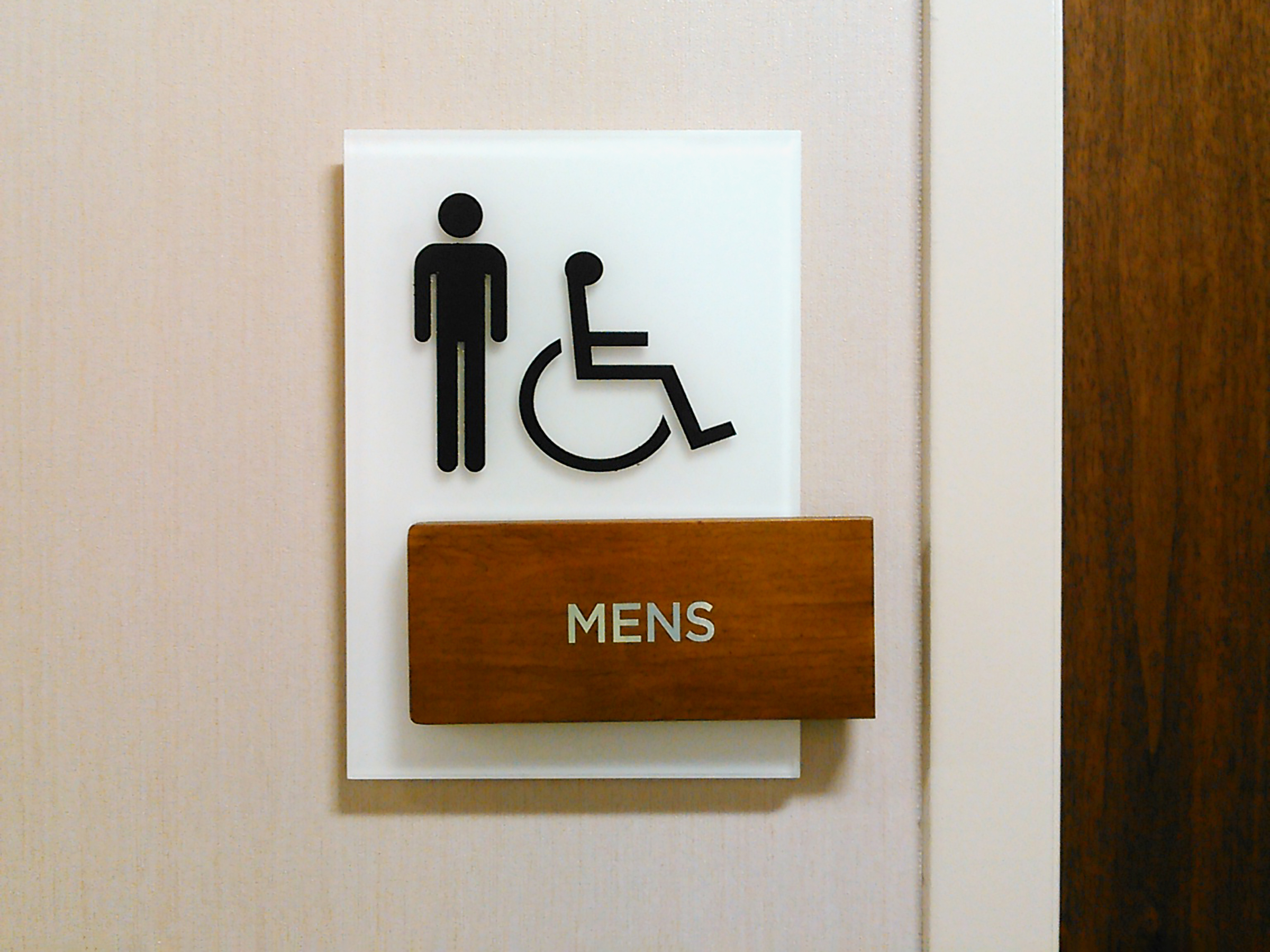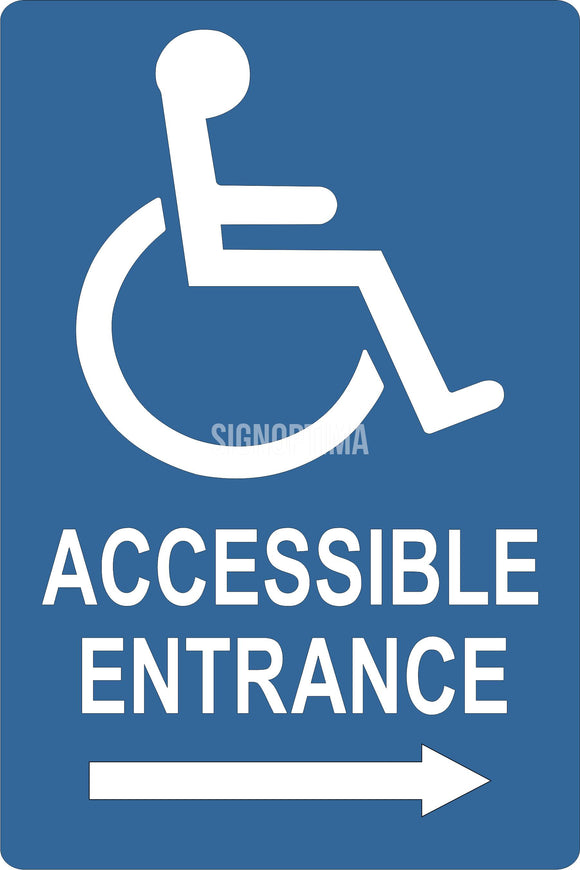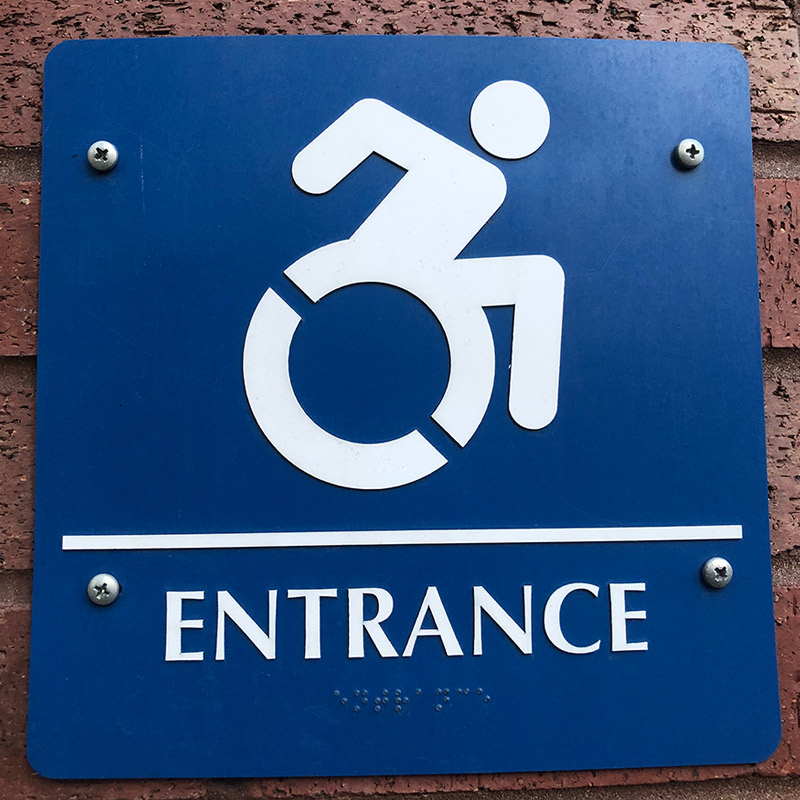The Influence of ADA Signs on Community Ease Of Access
The Influence of ADA Signs on Community Ease Of Access
Blog Article
Discovering the Trick Attributes of ADA Indicators for Improved Availability
In the world of availability, ADA signs offer as quiet yet powerful allies, making certain that spaces are accessible and inclusive for individuals with specials needs. By incorporating Braille and tactile aspects, these indicators break obstacles for the aesthetically impaired, while high-contrast shade systems and clear font styles provide to diverse visual requirements.
Importance of ADA Conformity
Guaranteeing conformity with the Americans with Disabilities Act (ADA) is vital for fostering inclusivity and equal accessibility in public areas and offices. The ADA, enacted in 1990, mandates that all public facilities, companies, and transportation services fit people with impairments, guaranteeing they enjoy the exact same rights and opportunities as others. Conformity with ADA criteria not only satisfies lawful commitments yet additionally enhances an organization's track record by showing its dedication to variety and inclusivity.
Among the key aspects of ADA compliance is the application of easily accessible signs. ADA indicators are designed to guarantee that people with handicaps can easily navigate through buildings and areas. These indicators need to adhere to specific guidelines regarding size, typeface, shade comparison, and positioning to assure presence and readability for all. Effectively applied ADA signs assists get rid of barriers that people with handicaps often encounter, therefore advertising their self-reliance and confidence (ADA Signs).
Furthermore, sticking to ADA guidelines can reduce the risk of lawful effects and prospective fines. Organizations that fail to follow ADA standards may deal with charges or lawsuits, which can be both economically difficult and harmful to their public photo. Thus, ADA conformity is integral to promoting an equitable atmosphere for every person.
Braille and Tactile Elements
The consolidation of Braille and responsive components right into ADA signage symbolizes the principles of access and inclusivity. It is generally put underneath the equivalent message on signs to make certain that people can access the information without visual assistance.
Tactile elements expand past Braille and consist of increased symbols and characters. These parts are designed to be discernible by touch, allowing people to recognize space numbers, bathrooms, exits, and other crucial areas. The ADA establishes certain guidelines concerning the size, spacing, and positioning of these tactile elements to maximize readability and make sure consistency across various atmospheres.

High-Contrast Color Design
High-contrast color pattern play an essential role in boosting the exposure and readability of ADA signs for individuals with aesthetic disabilities. These schemes are crucial as they make best use of the difference in light reflectance in between text and history, guaranteeing that indicators are quickly noticeable, even from a range. The Americans with Disabilities Act (ADA) mandates using details color contrasts to accommodate those with minimal vision, making it an essential aspect of conformity.
The efficiency of high-contrast colors hinges on their capability to stick out in various illumination problems, including poorly lit environments and areas with glow. Usually, dark message on a light background or light text on a dark history is employed to accomplish optimum comparison. For example, black message on a yellow or white background supplies a raw visual difference that helps in quick recognition and understanding.

Legible Fonts and Text Size
When thinking about the style of ADA signage, the choice of legible typefaces and ideal message dimension can not be overstated. The Americans with Disabilities Act (ADA) mandates that fonts need to be not italic and sans-serif, oblique, script, highly decorative, or of uncommon type.
The size of the text also plays a critical duty in accessibility. According to ADA standards, the minimum text elevation this content must be 5/8 inch, and it ought to enhance proportionally with viewing range. This is particularly essential in sites public spaces where signage demands to be checked out rapidly and accurately. Uniformity in text dimension adds to a cohesive aesthetic experience, helping people in browsing environments successfully.
Additionally, spacing in between letters and lines is indispensable to clarity. Adequate spacing protects against characters from showing up crowded, enhancing readability. By sticking to these standards, designers can significantly enhance ease of access, making certain that signs offers its intended function for all people, no matter their aesthetic capacities.
Efficient Positioning Strategies
Strategic positioning of ADA signs is vital for taking full advantage of access and guaranteeing conformity with lawful criteria. Correctly located indicators guide individuals with specials needs properly, facilitating navigation in public areas. Trick factors to consider include height, distance, and presence. ADA guidelines stipulate that signs ought to be installed at an elevation in between 48 to 60 inches from the ground to guarantee they are within the line of view for both standing and seated people. This typical elevation array is critical for inclusivity, enabling wheelchair users and individuals of differing elevations to accessibility details easily.
Additionally, signs must be positioned beside the lock side of doors to enable simple identification prior to access. This positioning assists individuals locate rooms and spaces without blockage. In situations where there is no door, indications need to be located on the local nearby wall. Consistency in indicator positioning throughout a facility boosts predictability, minimizing confusion and boosting general user experience.

Conclusion
ADA signs play an important function in promoting ease of access by integrating functions that deal with the requirements of individuals with impairments. These elements collectively foster a comprehensive environment, emphasizing the importance of ADA conformity in making sure equal access for all.
In the realm of access, ADA indicators offer as silent yet powerful allies, making certain that rooms are inclusive and accessible for individuals with impairments. The ADA, enacted in 1990, mandates that all public centers, employers, and transportation solutions fit individuals with disabilities, guaranteeing they take pleasure in the same rights and possibilities as others. ADA Signs. ADA indications are developed to guarantee that individuals with handicaps can quickly navigate via rooms and buildings. ADA guidelines state that signs need to be installed at a height in between 48 to 60 inches from the ground to ensure they are within the line of view for both standing and seated individuals.ADA indicators play an essential function in promoting availability by integrating attributes that deal with the demands of people with disabilities
Report this page